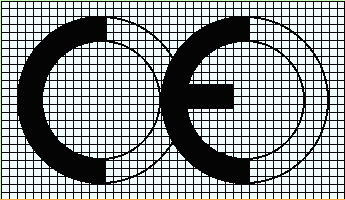| |||
To be sold within the European market, certain products require CE-marking. The CE mark declares that your product complies with the Essential Requirements of the applicable EU Directives.
Applicable requirements are set forth in various European Directives that replace individual country safety standards. The Directives apply to products manufactured within but also exported to the European Union.
The CE Mark, which is affixed to a product or its packaging, is considered proof that a product has met the requirements of the harmonized European standard, or directive.
The CE mark is placed on a product as the manufacturer�s visual identifier that the product meets the requirements of relevant European Directives. It is mandatory for a wide range of products sold within or exported to the European market.
To facilitate free trade and ensure the safety of certain products, European countries have developed a series of standards, or Directives as they are called. Compliance is mandatory. It is a legal obligation on the part of the manufacturer or his agent. Penalties for failing to get CE-marking for a product can be severe.
If you wish to sell your products within the European Union member states and the European Economic Area, the product in question must comply with the Directive(s). This also applies if you are a manufacturer who wants to export products into the European Member countries.
The Directives replace individual country standards as they relate principally to the safety of these products.
 What products do the
Directives cover?
What products do the
Directives cover?
The Directives apply to a wide range of products. The most notable products that likely need CE-marking are:
- pressure equipment
- machinery of almost any description
- electrical and electronic equipment
- medical devices and equipment
- personal protective equipment
- equipment for use in potentially explosive
environments
There are certain exclusions, but if you manufacture any of the above types of equipment or products then one or more of the Directives almost certainly apply.
CE-marking compliance is a legal requirement in the European Union member states and the European Economic Area countries. The countries are:
- Austria
- Belgium
- Cyprus
- Czech Republic
- Denmark
- Estonia
- Finland
- France
- Germany
- Greece
- Hungary
- Iceland
- Ireland
- Italy
- Latvia
- Lichtenstein
- Lithuania
- Luxemburg
- Malta
- Norway
- Poland
- Portugal
- Slovakia
- Slovenia
- Spain
- Sweden
- The Netherlands
- UK
Other countries are likely to adopt the Directives in the future.
The EU introduced the CE marking scheme to make trade easier and cheaper between EU countries. It means that a manufacturer claims that their product conforms to the minimum legal requirements for health and safety as laid down in EU directives.
If you manufacture or import a product which falls within the scope of one or more of the New Approach Directives and wish to place your product on the market in any of the members states of the European Economic Area (EEA), then you must apply CE marking to your product against the essential requirements of all these applicable directives.
Directives apply to 99% of all industrial and domestic products sold in Europe; it is the distinctive CE mark that signifies compliance with the applicable Directives. Without the CE mark and the correct documentation, manufacturers and importers are at an immediate disadvantage when competing against compliant competitors.
The requirements of the Directives are to ensure that manufacturers have identified and addressed all aspects of design and manufacturing that could impact safety and the safe operations of the equipment.
The actions required to become compliant with the Directives vary according to which Directive(s) apply and the type or classification of the equipment as defined by the Directive(s). However, there are some general steps you should follow:
- Determine which, if any, EU Directives apply to your product(s),
- Determine the extent to which your product already complies with the essential requirements of the Directives.
- Choose conformity assessment routes. Depending on the nature of the equipment or product, you may be able to implement and declare compliance and affix the CE mark without assistance or service from an external company.
A Notified Body is an independent body appointed by an agency within one of the European countries, usually governmental, as being capable of performing the duties of a Notified Body as defined by the Directives.
